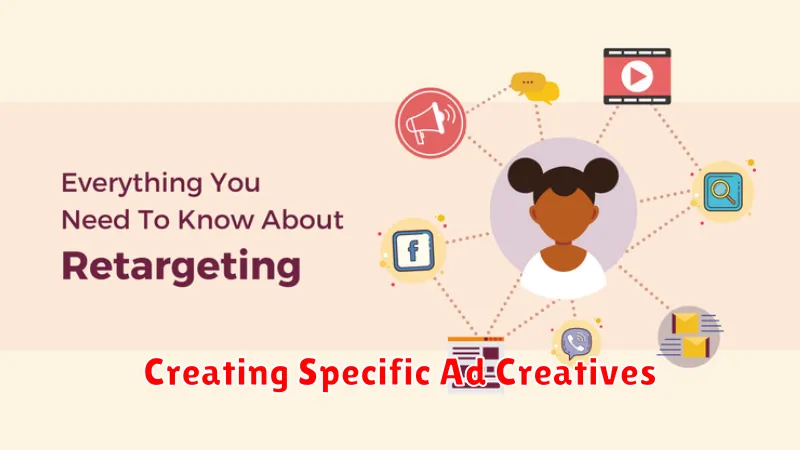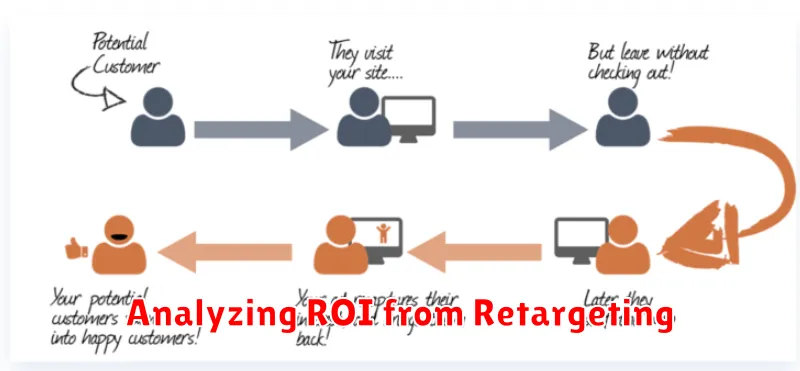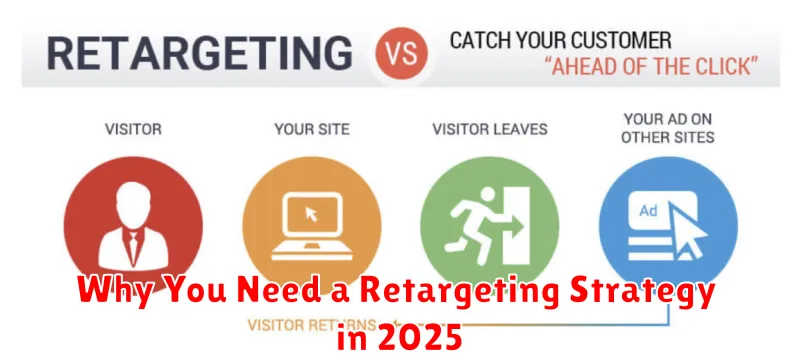In the ever-evolving digital landscape of 2025, capturing the attention of potential customers and converting them into loyal buyers is more challenging than ever. Competition is fierce, and consumers are bombarded with countless ads daily. This makes it crucial to implement effective strategies that not only reach your target audience but also keep your brand top-of-mind. A well-structured retargeting strategy is no longer a luxury, but a necessity for businesses looking to maximize their return on investment (ROI) and thrive in the competitive market of 2025. Retargeting allows you to reconnect with users who have previously interacted with your website or brand, increasing the likelihood of conversion by keeping your products or services in front of a warm audience. Ignoring this powerful tool could mean missing out on valuable opportunities to capture lost sales and cultivate lasting customer relationships.
This article will explore the key reasons why a retargeting strategy is essential for success in 2025. We will delve into the benefits of retargeting, including increased brand awareness, improved conversion rates, and enhanced ROI. We’ll also discuss various retargeting techniques, such as pixel-based retargeting, list-based retargeting, and dynamic retargeting, allowing you to choose the most effective approach for your business needs. By understanding the power of retargeting, you can gain a competitive edge and drive significant growth in the coming years. Prepare to transform your marketing approach and unlock the full potential of your online presence with a retargeting strategy designed for the dynamic market of 2025.
What is Retargeting?
Retargeting, also known as remarketing, is a powerful digital marketing strategy that allows you to reconnect with users who have previously interacted with your website, app, or other digital platform. It works by tracking these users’ online activity and strategically displaying relevant ads to them as they browse the web.
Essentially, retargeting gives you a second chance to capture the attention of potential customers who have shown initial interest but haven’t completed a desired action, such as making a purchase or filling out a form. By reminding them of your products or services, you can effectively re-engage them and guide them back towards conversion.
Key benefits of retargeting include increased brand awareness, improved conversion rates, and a higher return on investment (ROI). This targeted approach ensures that your advertising budget is focused on individuals who are already familiar with your brand, making it a highly effective strategy for maximizing your marketing efforts.
Pixel Setup and Tracking

Accurate retargeting relies on effective data collection. This begins with installing a pixel, a small piece of code, on your website. This pixel tracks user behavior, such as pages viewed and products added to carts.
The setup process typically involves copying and pasting the pixel code into the header or footer of your website. Ensure the pixel is placed on every page you want to track for optimal data capture.
Once installed, the pixel begins monitoring website activity. This data informs your retargeting campaigns, allowing you to precisely target ads to users based on their demonstrated interest.
Segmenting Audiences for Retargeting
Effective retargeting relies heavily on segmentation. Treating all website visitors the same is inefficient. By dividing your audience into specific groups, you can tailor your messaging and offers for maximum impact.
Consider segmenting based on website behavior. For example, target users who abandoned their shopping carts with reminders and incentives to complete their purchase. Alternatively, show product recommendations to users who viewed specific product pages.
Engagement level is another crucial factor. Users who have interacted frequently with your brand should receive different messaging compared to first-time visitors. Perhaps offer loyal customers exclusive deals and early access to new products.
Finally, leverage demographics and interests whenever possible. This data allows for highly personalized retargeting campaigns that resonate with specific audience segments and improve conversion rates.
Creating Specific Ad Creatives

Once you’ve segmented your audience, the next crucial step is developing ad creatives tailored to each segment. Generic ads rarely resonate with retargeted audiences. Specificity is key. Think about what each segment did on your website and what products or services they viewed.
For example, if a segment viewed a particular product page but didn’t purchase, your ad creative should showcase that specific product, perhaps with a limited-time offer or a reminder of its benefits. If they abandoned their cart, show them the contents of their cart and offer free shipping or a discount to incentivize completion of the purchase.
Dynamic retargeting takes this a step further by automatically generating ads featuring the products or content a user previously interacted with. This hyper-personalized approach is highly effective in recapturing user attention and driving conversions.
Budgeting for Retargeting Campaigns
Allocating the right budget for your retargeting campaigns is crucial for maximizing ROI. There isn’t a one-size-fits-all answer, as the ideal budget depends on several factors specific to your business.
Factors influencing budget include your overall marketing budget, your average customer lifetime value (CLTV), and the retargeting platform you choose. Businesses with higher CLTVs can often justify larger retargeting spends. Additionally, consider the cost-per-click (CPC) and cost-per-thousand-impressions (CPM) associated with your chosen platform.
Start with a small test budget to gauge performance. Carefully monitor key metrics like click-through rate (CTR) and conversion rate. Based on these initial results, you can gradually scale your budget, ensuring optimal performance and efficient ad spend.
Consider allocating a percentage of your overall marketing budget specifically for retargeting. A common starting point is 10-20%, but this can be adjusted based on performance and your specific business goals.
Analyzing ROI from Retargeting

Measuring the return on investment (ROI) from retargeting campaigns is crucial. Accurate analysis helps determine the effectiveness of your strategy and justify continued investment. Calculating ROI involves comparing the revenue generated from retargeting against the cost of the campaign.
Key metrics to consider include conversion rates, cost per acquisition (CPA), and click-through rates (CTR). By tracking these metrics, you can identify areas for optimization and improve overall campaign performance.
A simple formula for calculating ROI is: (Revenue from Retargeting - Cost of Retargeting) / Cost of Retargeting * 100%. For example, if your retargeting campaign generated $10,000 in revenue and cost $2,000, your ROI would be 400%.

